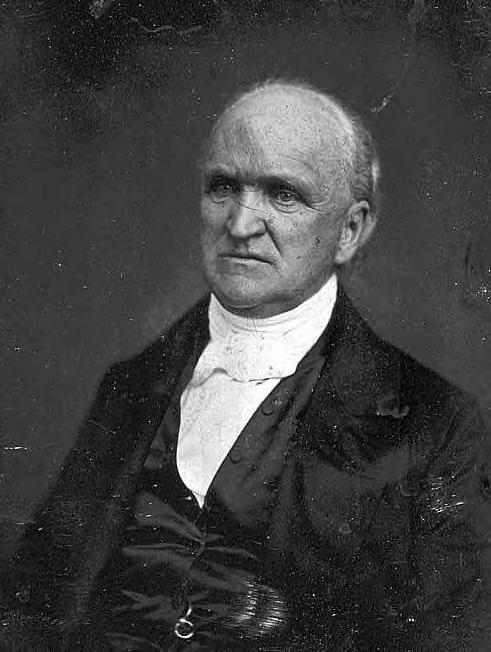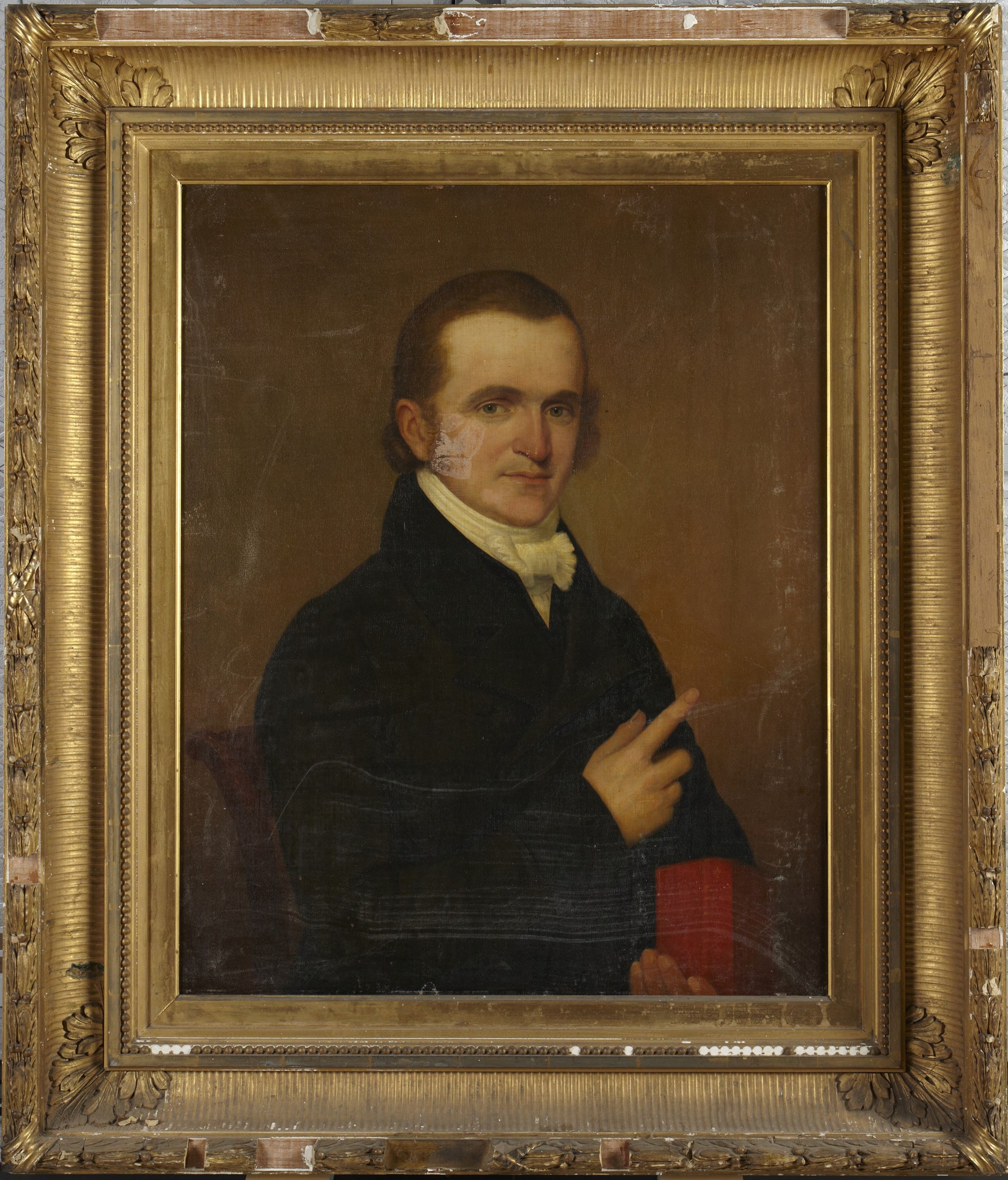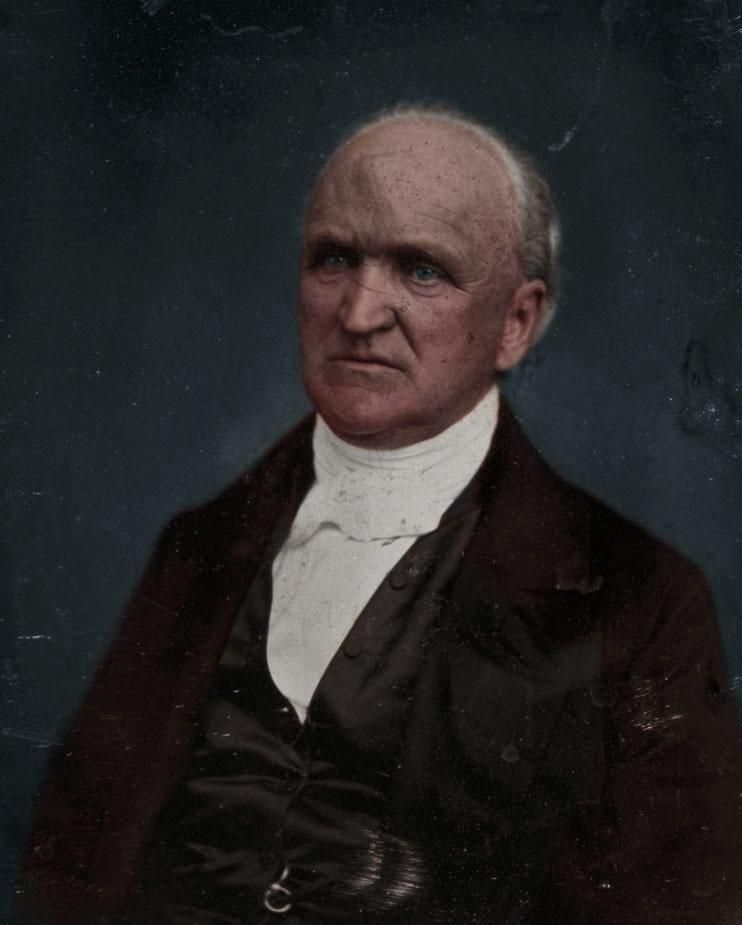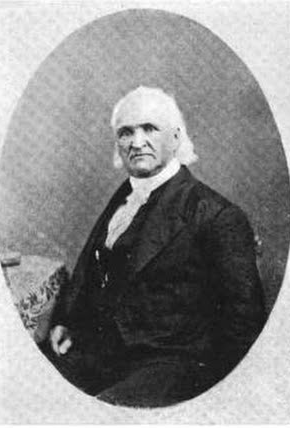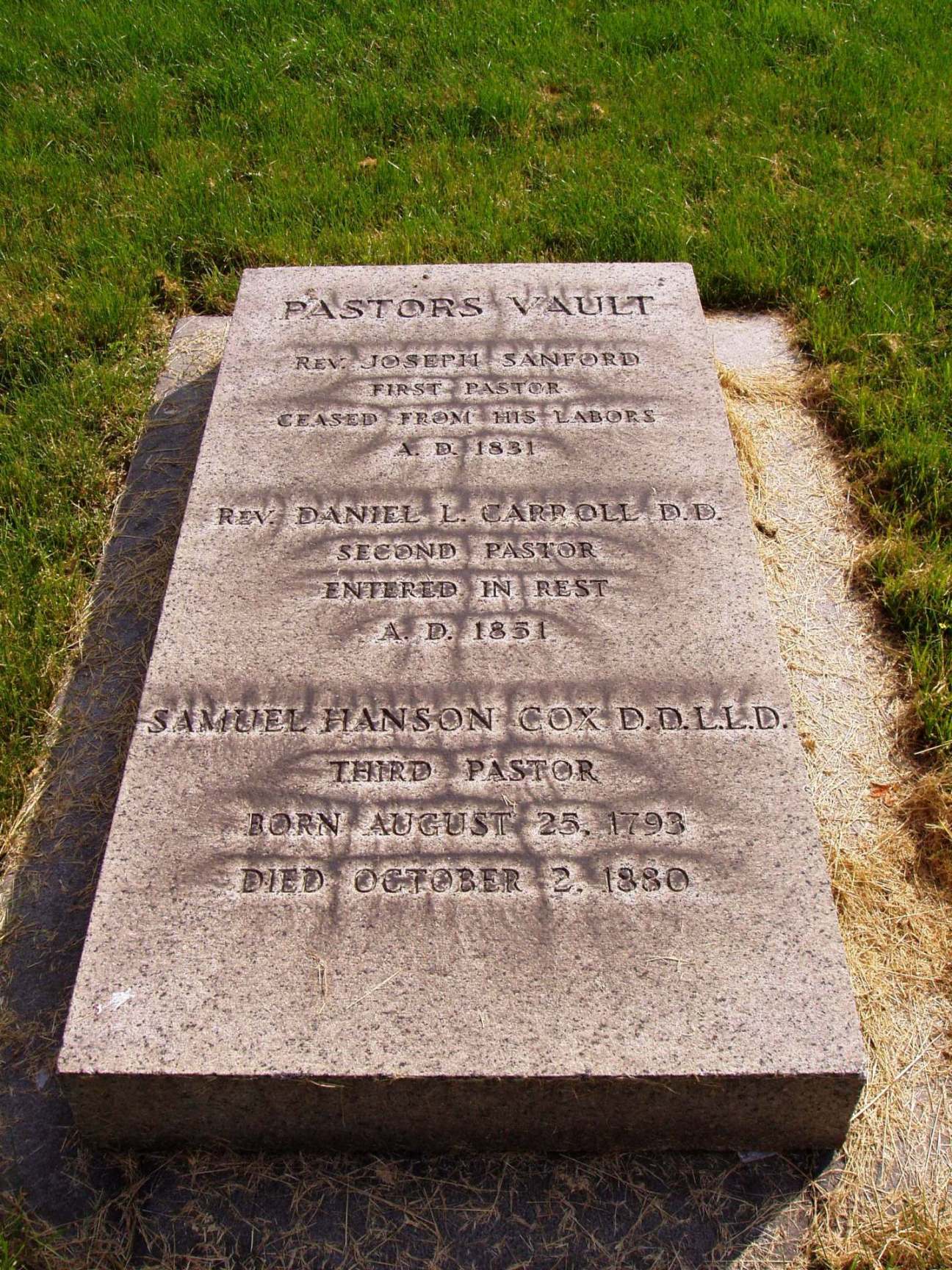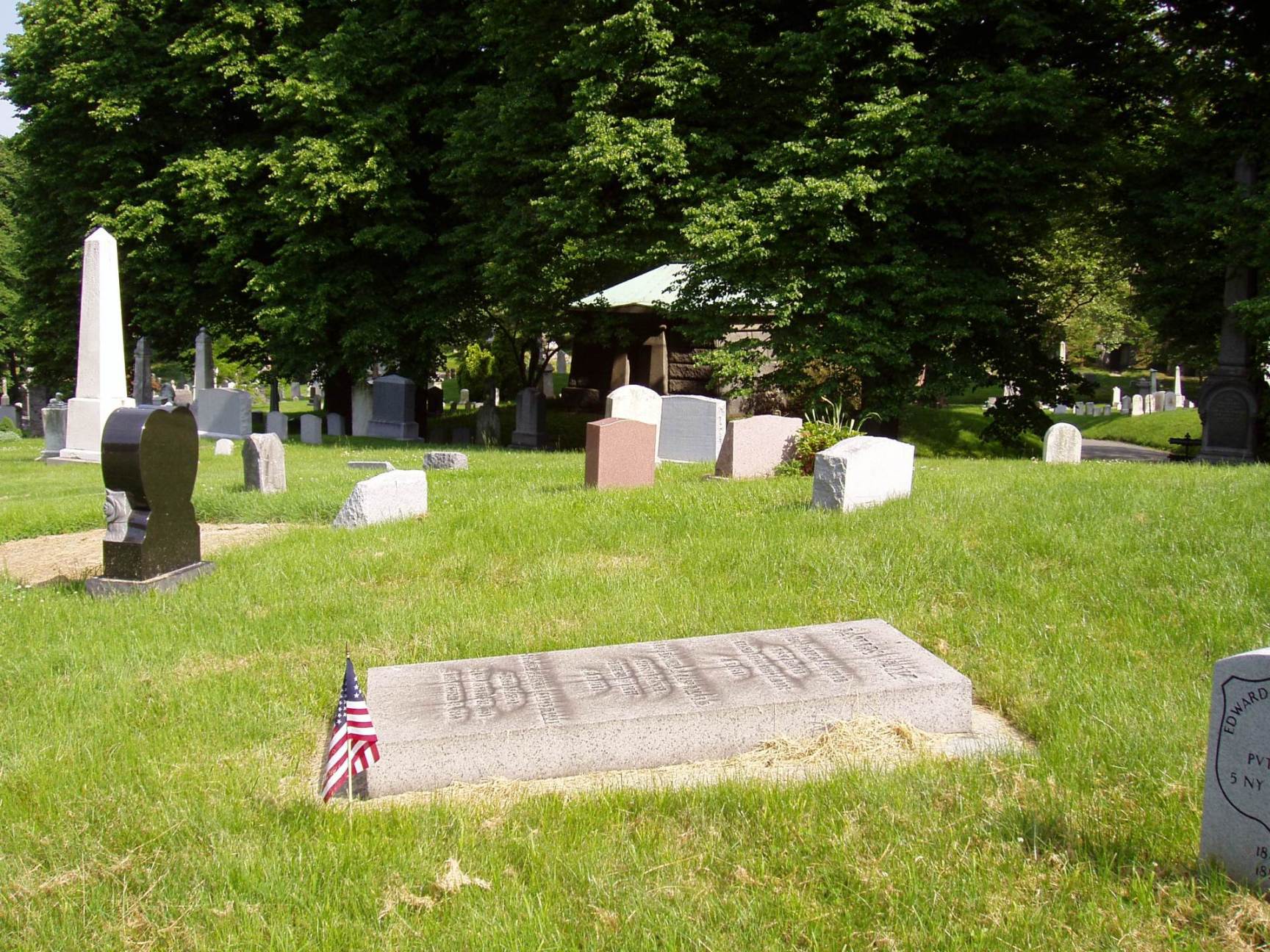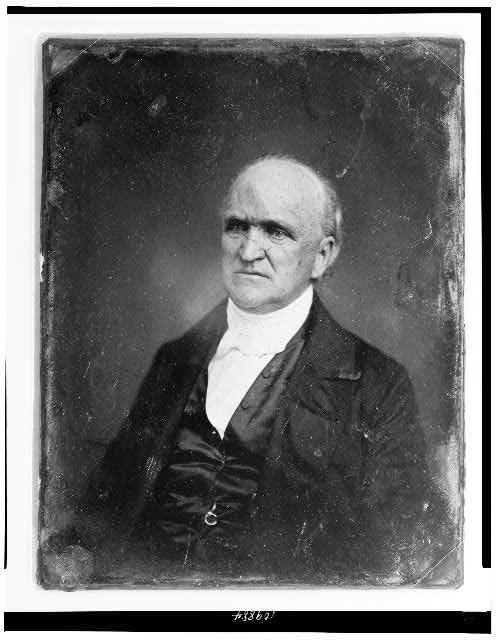BIO BY WEBSITE: WIKIPEDIA.
________________________________
NEW YORK DAILY TRIBUNE, THURSDAY OCTOBER 7, 1880
FUNERAL OF THE REV. DR. COX. The funeral of the late Rev. Dr. Samuel Hanson Cox, who died at Bronxville, Westchester County, on Saturday, was attended by a large number of clergymen and friends of Dr. Cox at the First Presbyterian Church in Brooklyn yesterday afternoon. Dr. Cox was at one time pastor of this church. The pallbearers were the Rev. Drs. John Hall, of the Fifth Avenue Presbyterian Church, C. S. Robinson, of the Memorial Presbyterian Church, William Ormiston, of the Collegiate Reformed Church, R. D. Hitchcock and E. P. Prentice, of the Union Theological Seminary, E. B. Burchard, formerly of the Thirteenth Street Presbyterian Church, and A. W. Spaulding. The services were conducted by the Rev. Charles Cathbert Hall, pastor of the First Presbyterian Church in Brooklyn, the Rev. Dr. Hatfield, Stated Clerk of the Presbyterian General Assembly, and the Rev. Dr. Richard S. Storrs, of the Church of the Pilgrims of Brooklyn. Dr. Storrs paid a high tribute to Dr. Cox, with whom he was in intimate friendship, and said that Dr. Erskine, the Scottish divine, told him that Dr. Cox was one of the most eloquent men he had ever heard. The burial was in the pastors' vault of the First Presbyterian Church in Greenwood Cemetery, where the bodies of two other pastors of the church had been placed.
_______________________________
THANKS TO: VintageMom for the obit and the location of Rev. Cox's grave.
THANKS ALSO TO: Bob Collins for the photos of the gravesite.∼Perhaps the single worst day in the history of Charlton Street Manhattan New York was July 10, 1834, when Charlton Street was overrun by a racist mob seeking to harm the Rev. Samuel H. Cox, who lived at 3 Charlton.
Cox was an abolitionist in an era when abolitionists were viewed as radicals and troublemakers. Days before the mob invaded Charlton Street, he had preached that Americans should have sympathy for the plight of slaves because Jesus "was a colored man… probably of a dark Syrian hue," a description that infuriated many whites. Newspapers accused Cox, who was himself white, of seeking social equality for blacks in order to promote interracial sex and marriage. As tensions mounted, a white mob attacked an abolitionist meeting on Chatham Street on July 9. The following day, rioters smashed the windows of Cox‟s church on Laight Street and swept north to Charlton, barricading the street and breaking into his house. Fortunately, Cox and his family had fled, but the rioters looted the house and returned the next morning to loot it again. Mob violence continued throughout Lower Manhattan for three days, targeting the homes, churches, and shops of blacks and abolitionists. Shaken by these events, Cox moved upstate to teach theology.
BIO BY WEBSITE: WIKIPEDIA.
________________________________
NEW YORK DAILY TRIBUNE, THURSDAY OCTOBER 7, 1880
FUNERAL OF THE REV. DR. COX. The funeral of the late Rev. Dr. Samuel Hanson Cox, who died at Bronxville, Westchester County, on Saturday, was attended by a large number of clergymen and friends of Dr. Cox at the First Presbyterian Church in Brooklyn yesterday afternoon. Dr. Cox was at one time pastor of this church. The pallbearers were the Rev. Drs. John Hall, of the Fifth Avenue Presbyterian Church, C. S. Robinson, of the Memorial Presbyterian Church, William Ormiston, of the Collegiate Reformed Church, R. D. Hitchcock and E. P. Prentice, of the Union Theological Seminary, E. B. Burchard, formerly of the Thirteenth Street Presbyterian Church, and A. W. Spaulding. The services were conducted by the Rev. Charles Cathbert Hall, pastor of the First Presbyterian Church in Brooklyn, the Rev. Dr. Hatfield, Stated Clerk of the Presbyterian General Assembly, and the Rev. Dr. Richard S. Storrs, of the Church of the Pilgrims of Brooklyn. Dr. Storrs paid a high tribute to Dr. Cox, with whom he was in intimate friendship, and said that Dr. Erskine, the Scottish divine, told him that Dr. Cox was one of the most eloquent men he had ever heard. The burial was in the pastors' vault of the First Presbyterian Church in Greenwood Cemetery, where the bodies of two other pastors of the church had been placed.
_______________________________
THANKS TO: VintageMom for the obit and the location of Rev. Cox's grave.
THANKS ALSO TO: Bob Collins for the photos of the gravesite.∼Perhaps the single worst day in the history of Charlton Street Manhattan New York was July 10, 1834, when Charlton Street was overrun by a racist mob seeking to harm the Rev. Samuel H. Cox, who lived at 3 Charlton.
Cox was an abolitionist in an era when abolitionists were viewed as radicals and troublemakers. Days before the mob invaded Charlton Street, he had preached that Americans should have sympathy for the plight of slaves because Jesus "was a colored man… probably of a dark Syrian hue," a description that infuriated many whites. Newspapers accused Cox, who was himself white, of seeking social equality for blacks in order to promote interracial sex and marriage. As tensions mounted, a white mob attacked an abolitionist meeting on Chatham Street on July 9. The following day, rioters smashed the windows of Cox‟s church on Laight Street and swept north to Charlton, barricading the street and breaking into his house. Fortunately, Cox and his family had fled, but the rioters looted the house and returned the next morning to loot it again. Mob violence continued throughout Lower Manhattan for three days, targeting the homes, churches, and shops of blacks and abolitionists. Shaken by these events, Cox moved upstate to teach theology.
Family Members
-
![]()
Rt. Rev Arthur Cleveland Coxe
1818–1896
-
![]()
Rev Samuel Hanson Cox Jr
1819–1895
-
![]()
James Richards Cox
1821–1910
-
![]()
Elizabeth Rowe Cox
1822–1823
-
![]()
William Cowper Cox
1824–1882
-
![]()
Alfred Roe Cox
1825–1832
-
![]()
Elizabeth Russell Cox Thayer
1825–1901
-
![]()
Edward Dorr Griffin Cox
1828–1832
-
![]()
Abiah Caroline Cox
1830–1832
-
![]()
Mary Liddon Cox
1831–1831
-
![]()
Frances A Cox Headley
1833–1884
-
![]()
Henrietta Wolf Cox
1837–1838
-
![]()
Susan Roe Coxe Thomas
1838–1916
-
![]()
Anna Morrison Cox
1839–1907
-
![]()
Mary Lundie Cox Bartow
1842–1923
Advertisement
Advertisement























